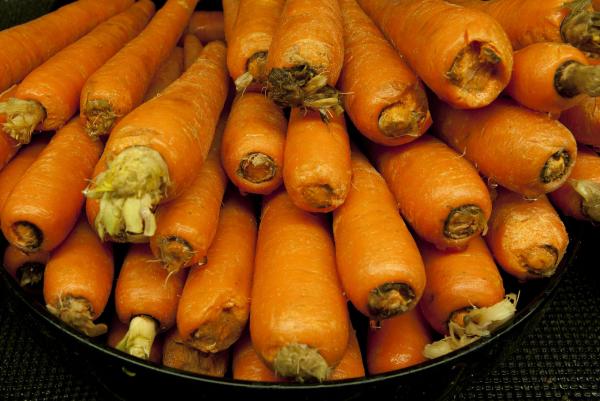
MADISON, Wis., May 9 (UPI) — In sequencing the genome of the lowly carrot, researchers have revealed several of the vegetable’s secrets — including the genetic origins of its orange color.
Researchers credit a gene called DCAR_032551 with enabling the carrot’s accumulation of carotenoids, which is responsible for the carrots rich vitamin content as well as its bright yellow and orange colors.
“The accumulation of orange pigments is an accumulation that normally wouldn’t happen,” Phil Simon, a horticulture professor and geneticist at the University of Wisconsin, said in a news release. “Now, we know what the genes are and what they do.”
“The carrot has a good reputation as a crop and we know it’s a significant source of nutrition — vitamin A, in particular,” Simon added. “Now, we have the chance to dig deeper and it’s a nice addition to the toolbox for improving the crop.”
Researchers sequenced the entire genome of the carrot variety known as the Nantes carrot. They also compared the genes of 37 domestic varieties to those of wild carrots, which are white.
The results confirmed that the first cultivated carrots, which were purple and yellow, were grown in Central Asia, 1,100 years ago. Orange carrots appeared later, in the 16th century, in Europe.
The latest research doesn’t explain the reasoning for the carrot’s original colors, but it does show there’s no correlation between color and flavor. Regardless of why, the carrot’s pigmentation helped seal its future as a vitamin powerhouse.
As domesticators continued to select the most colorful carrots for cultivation, they encouraged the accumulation of vitamins A and B.
Researchers suggest early carrot farmers may have simply selected for color to differentiate between the crops they intended to grow and patches of wild carrots.
“They could keep their crops ‘clean’ from a patch of wild carrots growing 50 meters away by choosing only the purple or yellow ones,” explained Simon.
The carrot has continued to enjoy significant genomic changes over the last several decades. Carrot breeding has resulted in increasingly high concentrations of carotene. Today’s bright orange carrots have 50 percent more carotene than they did in 1970.
Researchers published their carrot study this week in the journal Nature Genetics.






